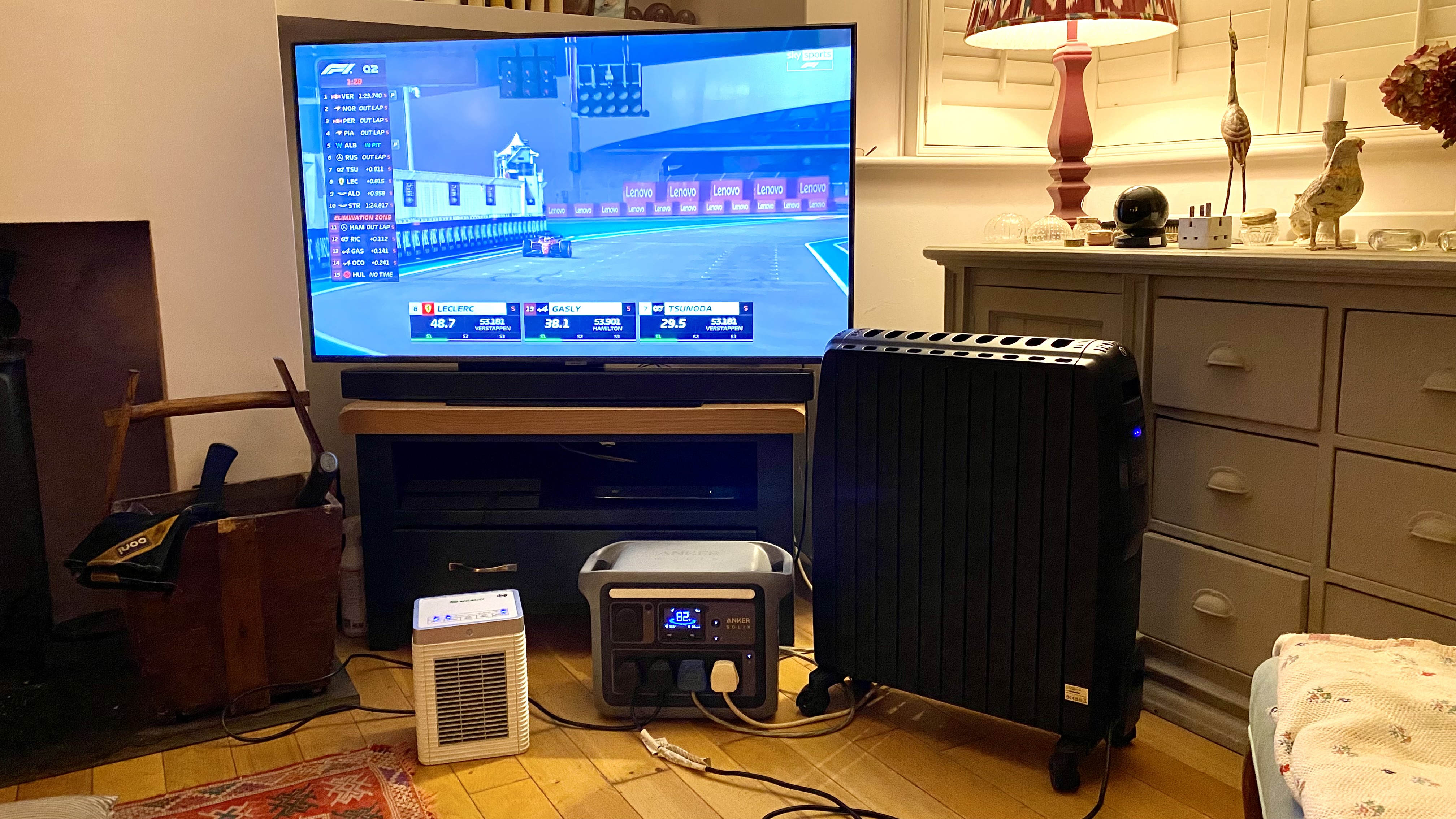
The best portable power stations have quickly become indispensable tools for powering our devices and appliances, whether we’re in the great outdoors or facing an unexpected power cut. These highly versatile and mostly compact devices are essentially rechargeable battery systems that are capable of delivering AC and DC electricity to a wide range of household appliances and travel devices.
And unlike traditional petrol- and diesel-powered generators, they are near silent in operation, produce zero emissions and require no fuel other than mains electricity for recharging.
Portable power stations come in a variety of sizes and capacities catering to a wide range of needs, from charging small devices like smartphones, tablets, laptops and drones to running larger appliances like TVs, fridges, freezers, power tools, heaters and personal medical equipment.
However, I’m not sure that many current portable power station owners are making the most of their purchases because there’s one specific area that portable power stations are especially well suited for – localised UPS backup in the home.
Using your portable power station as a UPS device
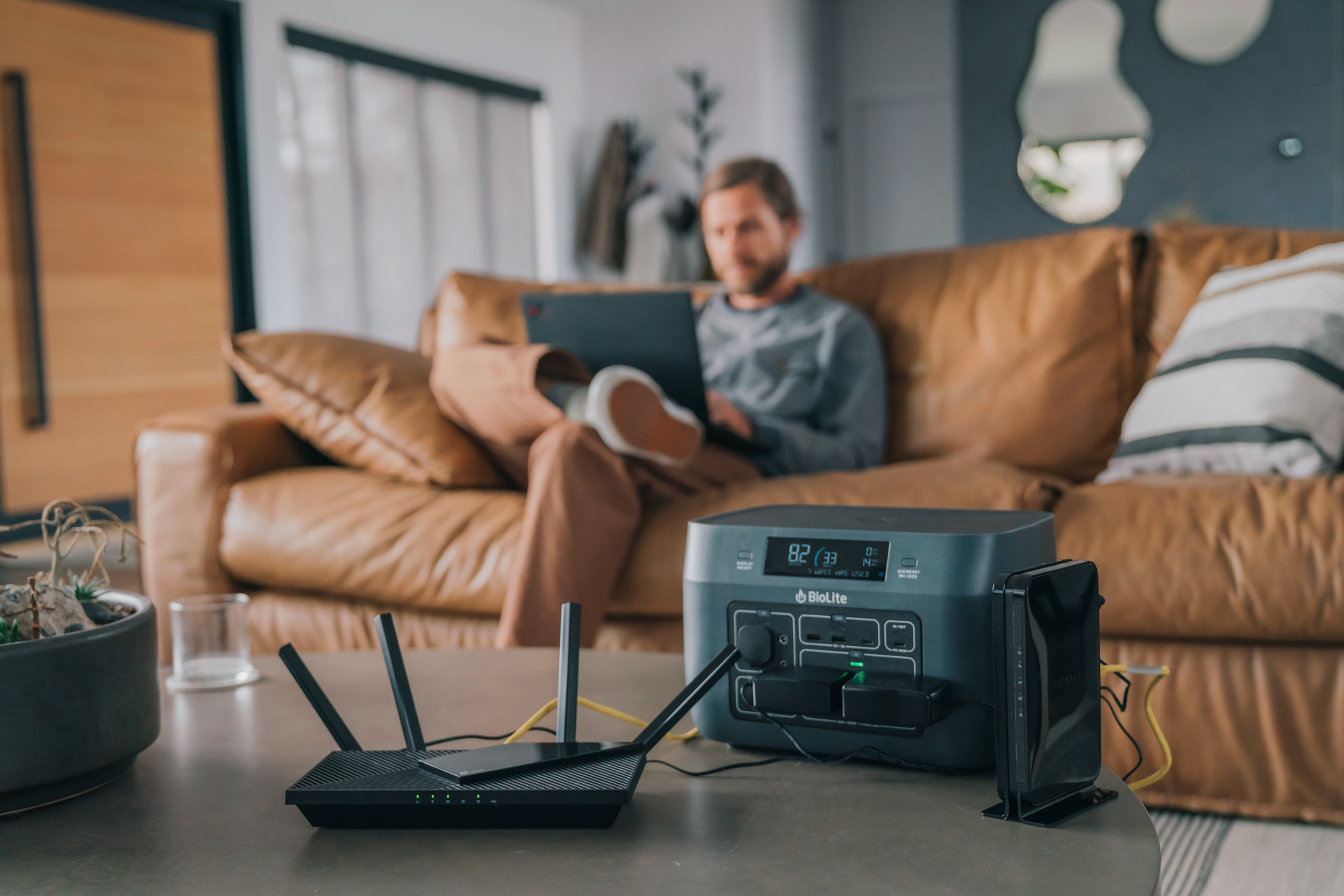
Given that you might not get to enjoy more than six outdoor breaks in a year, it stands to reason that the power station you’ve bought for your wilderness pursuits will likely sit at home doing diddly squat for the rest of the year when it could be used as a UPS backup device to provide power to your essential appliances during an unexpected power cut.
UPS stands for Uninterruptible Power Supply, and it’s the kind of thing most company’s IT departments have been using for years as instant backup power for their important computer systems. The same thing applies to all portable power stations fitted with a UPS feature – namely, the vast majority.
However, I’ve come to the conclusion that some popular high-output power stations are simply too big and heavy to carry and, for most users, way too overpowered for the outdoor functions they may have been designed for. Who needs more than 1,500W of power on a camping trip when, most of the time, the power station will be fuelling lower-wattage devices like phones, tablets, laptops, rechargeable torches, palm-sized heaters, tent lights and other low-wattage devices?
If used in conjunction with a solar panel, a sub-700W power station should be more than enough for a three-day camping trip and much longer if the sun’s out all day long. Sure, manufacturers will be quick to cite a range of electrical camping gear like kettles and induction hobs as part of their respective model’s uses, but they conveniently forget the fact that these items are already almost universally gas-powered – and gas is a much more convenient source of fuel when it comes to outdoor cooking.
Likewise, having one giant 2.4kW monster in the home that you can hardly lift – let alone store – to provide electricity backup in the event of a power cut is also extreme overkill, especially when it comes to hooking it up to a range of appliances that will inevitably be in different parts of the home.
Take my layout, for instance. My Wi-Fi router and several internet hubs are in the hall, the TV and PlayStation system are in the lounge, the fridge is in the utility room, and the coffee pod machine is in the kitchen.
A single 2.5kW power station would easily handle everything but would entail me having to run extension cables all over the place, possibly in the dark, if a power cut occurred in the evening and I wasn’t prepared for it. The alternative is a complete professional rewire of the home where all of one’s vital appliances are hooked up to a single UPS backup system. But imagine how much that would cost.
Hence, I think it’s much more logical to have two, three or four smaller, lower-specced UPS-equipped power stations that amount to the same price as one big one. As an example, I’ll cite the excellent Bluetti AC240 2.4kW behemoth I previously reviewed. This huge four-AC output beast costs £1,499 and weighs a whopping 33kgs. For that money you could buy five dinky 700-watt Bluetti AC50Bs or six even dinkier Anker SOLIX C300s. With change to spare for a solar panel!
Setting up a localised UPS system
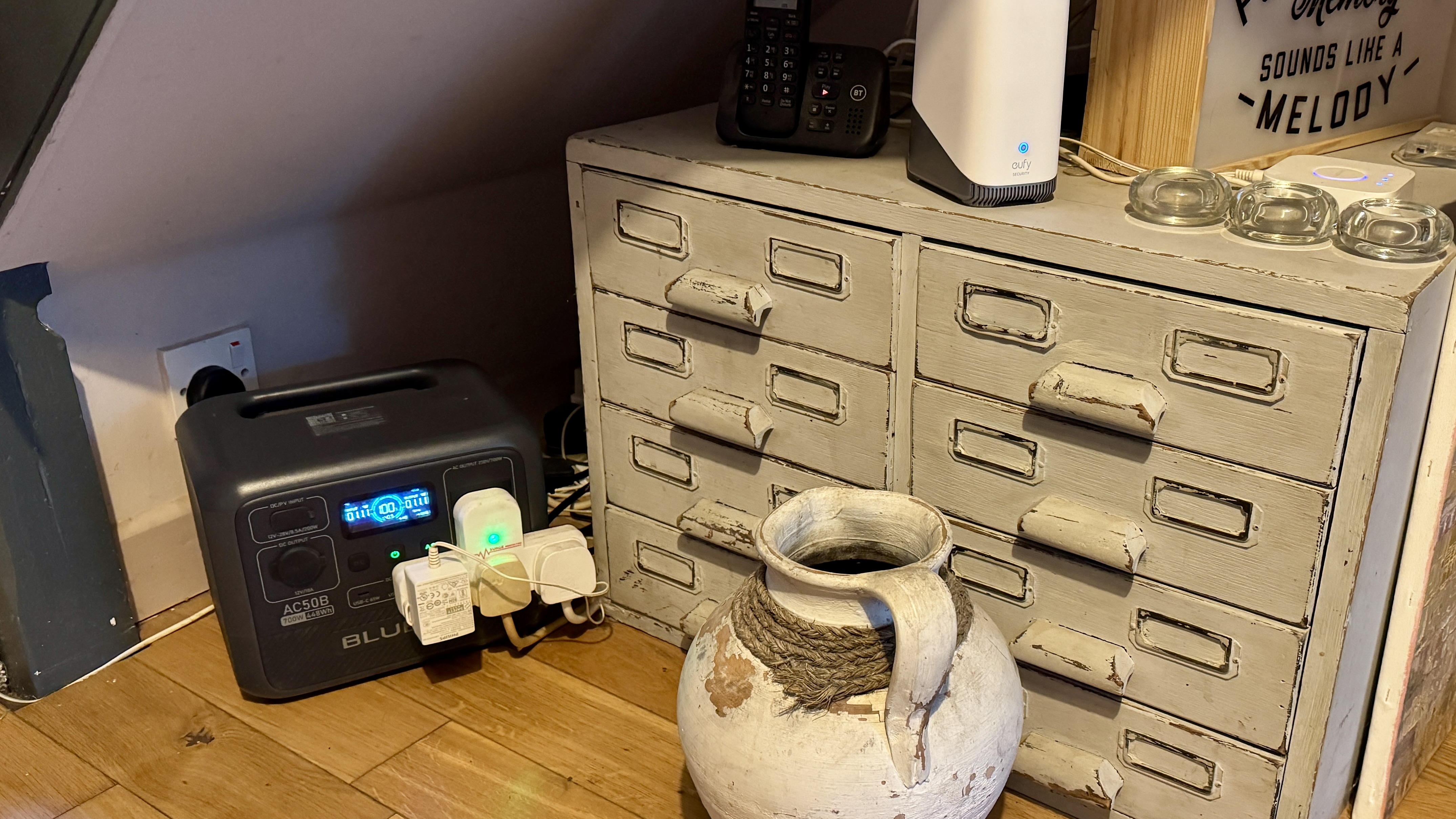
The beauty of smaller power stations like the 700W Bluetti AC50B, 300W Anker SOLIX C300, 1,500W Jackery Explorer 1000, 600W BioLite BaseCharge 600+ and EcoFlow’s excellent low-output River series is that they can be located right next to the device or devices you want protected in a power cut. And all without the faff of having to run extension cables hither and thither.
Using the power station’s UPC facility is a doddle. Simply plug the device or devices you want to be backed up into the power station and plug the power station into the nearest wall socket (use a short extension cord if the power station doesn’t have enough AC outputs).
During normal use, electricity will flow from the mains socket through the power station and into your devices. The devices themselves will still be powered by the mains. But if there’s a power outage, the UPS feature will kick in – in a seamless millisecond – and continue to power your devices using the power station’s battery, quite literally as if nothing ever happened.
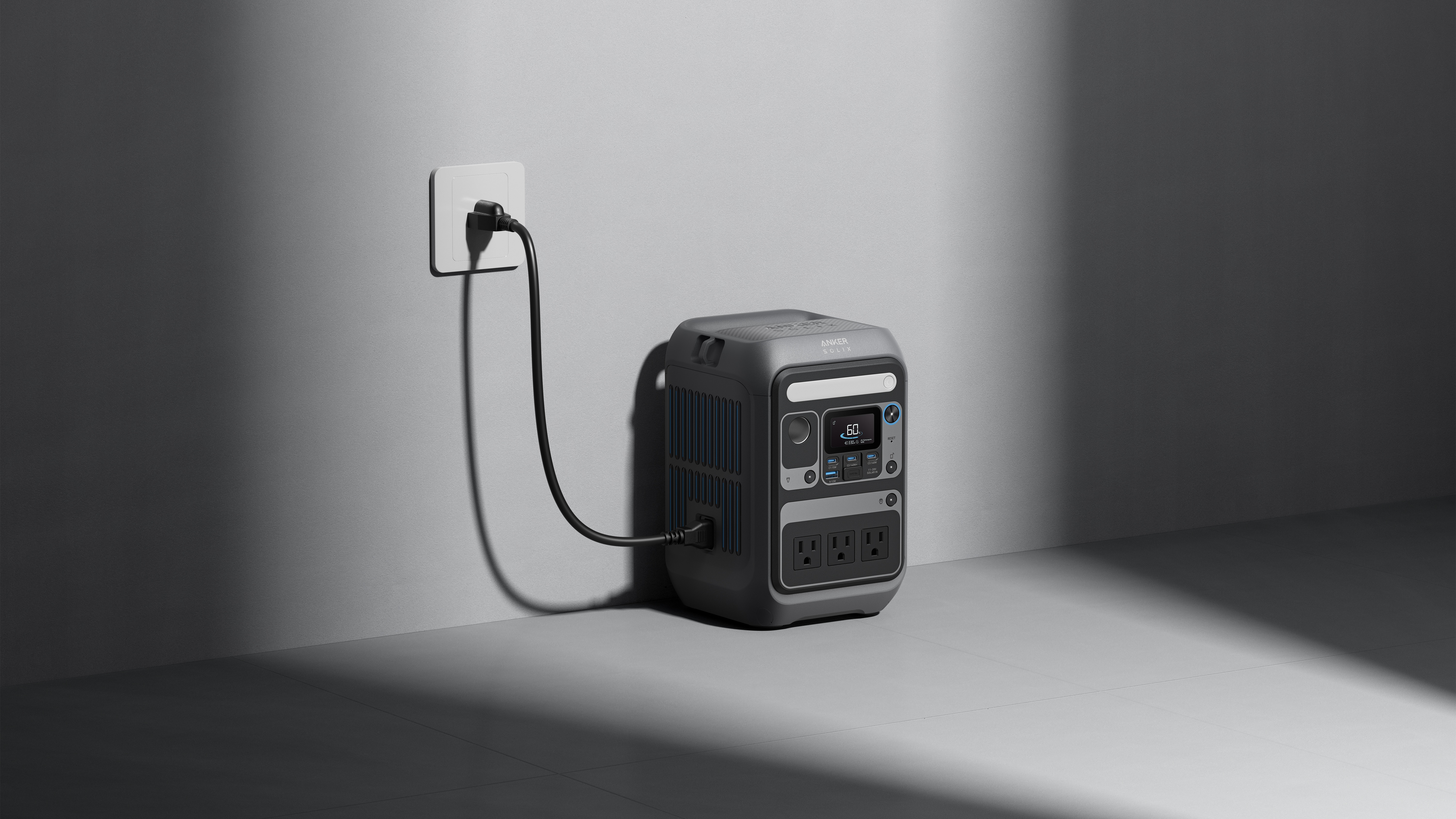
For instance, I'm using a 1,800W Anker SOLIX C1000 – by far the largest size I would consider – to backup my entire TV system comprising Samsung 50” Q-LED TV, JBL Soundbar, Sky Q Box, PlayStation 4 and three Hue lamps. And for my entire internet system – including numerous internet hubs – I’ve been using the cracking little 700W Bluetti AC50B in UPS mode.
Both systems just sit there tucked out of the way, waiting to kick into action the moment the power grid goes bang. So far I’ve experienced one evening power cut, and ours was the only house in the village still running a TV, internet and lighting. Had I required a vital personal medical device like an oxygen concentrator, that would have continued to run, too.
Agreed, some storm-induced power cuts in the US and even the UK can knock out power grids for a few days at a time, so chances are a smaller power station won’t continue running on its battery for that long unless you have a way to connect an outdoor solar panel during daylight hours.
But for me, having smaller power stations dotted around the home ready to jump in and save the day if there’s a sudden power cut is a far more convenient set-up than having one big leviathan with loads of connecting wires.
And besides, most rural power cuts are only for a few hours at a time – which means I can continue bingeing on my favourite Netflix series while everyone else is fumbling about in the dark looking for the candles.
Check the power consumption of your devices first

At this juncture, I should add that portable power stations come with built-in cooling fans that kick in when they are pushed to the limits of their power output. To cut down on annoying fan noise, always choose a power station with more than enough wattage to power the devices you have in mind.
In fact, it’s best to first check the specs of your devices before shopping for a power station – search the appliance's specifications list and look for the product's power output in Watts or Kilowatts.
The good news is that the majority of essential household appliances – lights (less than 36W for four), TV (65W), fridge (600W), laptop (60W), games console (125W), internet (10W), etc – are well within the boundaries of any small 700-watt system though you will need to stretch to a slightly larger 1.8kW model if you plan to provide UPS backup to a full-sized oil-filled radiator or a small espresso machine.
Happy camping
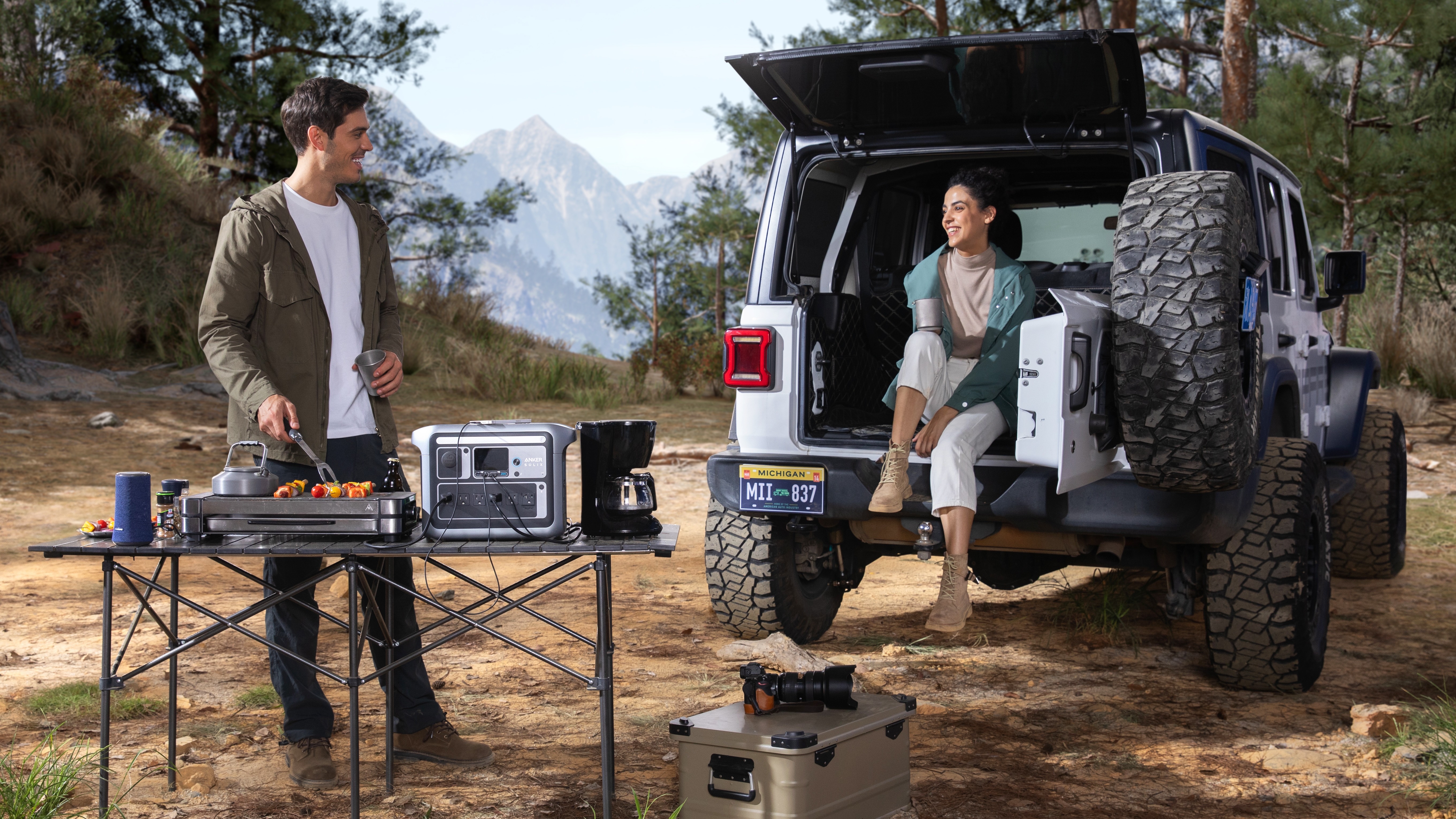
Aside from being used as an emergency UPS device, the other great thing about small portable power stations is that when it comes to heading out into the wilderness, you can simply unplug the unit from its place of work and take it with you.
Take two if you prefer, or even three, and you’ll have enough off-grid power to see you through a week of camping. And when you get back home, simply reconnect them to your appliances as before. That way, they serve a purpose all year round instead of just a few weeks.
Granted, some users, like construction and DIY workers, will benefit more from a larger model with the capacity to power a buzz saw or industrial blow heater, but for the majority of us, small is most definitely better.







